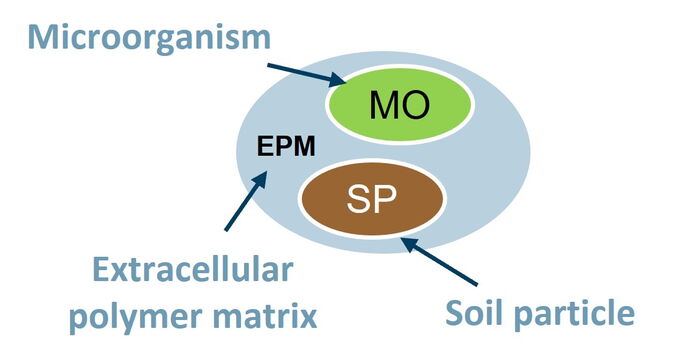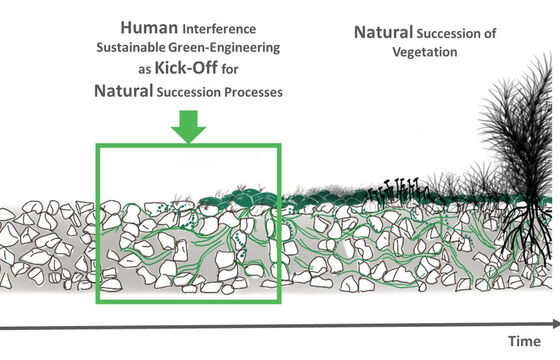Our Technology
Induced Biological Soil Crusts

What are Biological Soil Crusts (BSC)?
„Biological soil crusts (biocrusts) result from an intimate association between soil particles and differing proportions of photoautotrophic (e.g. cyanobacteria, algae, lichens, bryophytes) and heterotrophic (e.g. bacteria, fungi, archaea) organisms, which live within, or immediately on top of, the uppermost millimetres of soil. Soil particles are aggregated through the presence and activity of these often extremotolerant biota that desiccate regularly, and the resultant living crust covers the surface of the ground as a coherent layer."
Weber et. al. (2022) "What is a biocrust? A refined, contemporary definition for a broadening research community" Biological Reviews, …
Functions of Biological Soil Crusts

BSCs as an Enabler for Ecosystem Development and Restoration
-
BSCs are pioneer communities, paving the way for re-vegetation of degraded soils
-
BSCs are composed of pioneer microorganisms acting as kick-starters for soil formation processes
-
BSCs are major terrestrial players in global C and N cycles
-
Mechanical stabilization protecting soils against wind and water erosion
-
Increasing water retention capacity of soils by forming a polymer matrix



